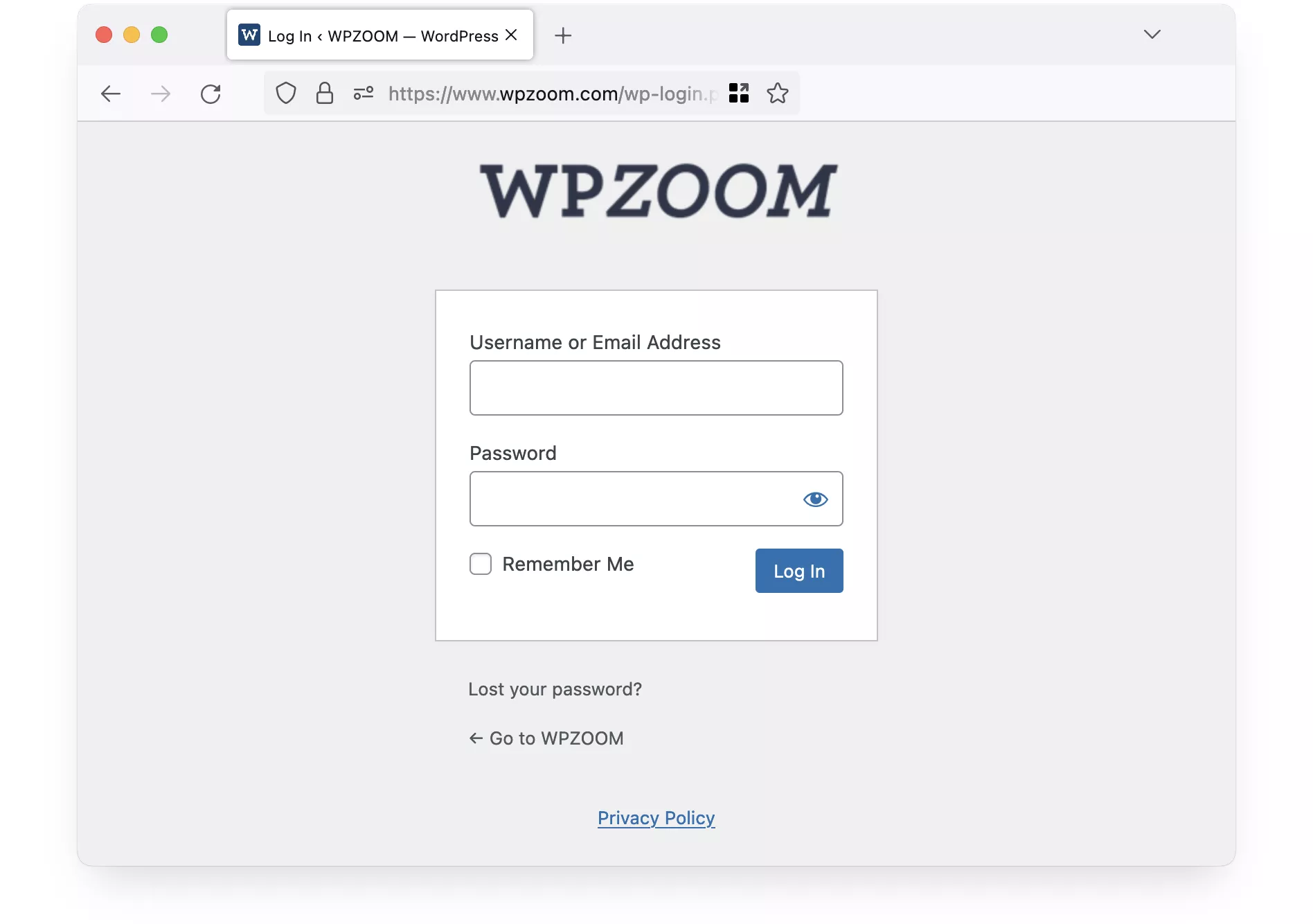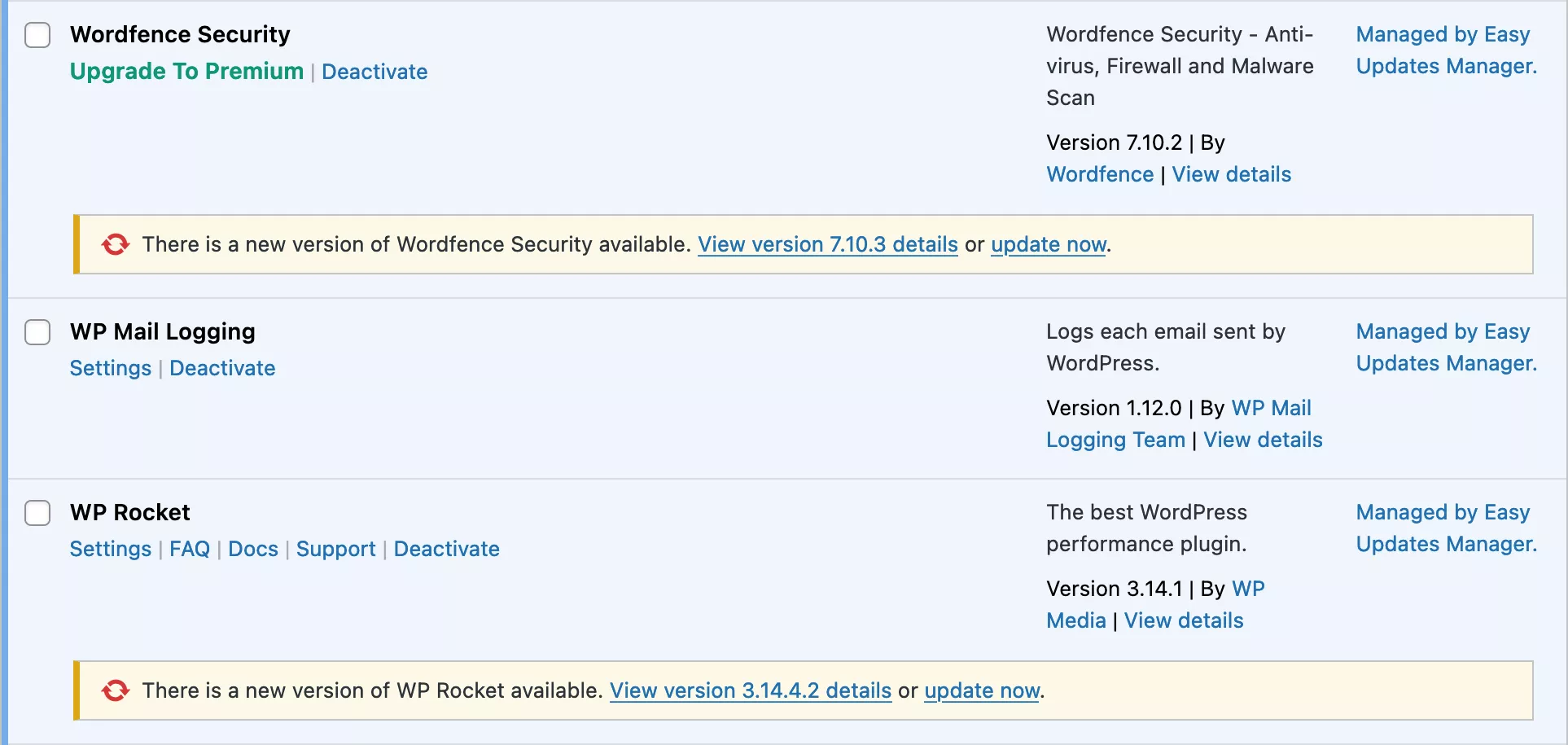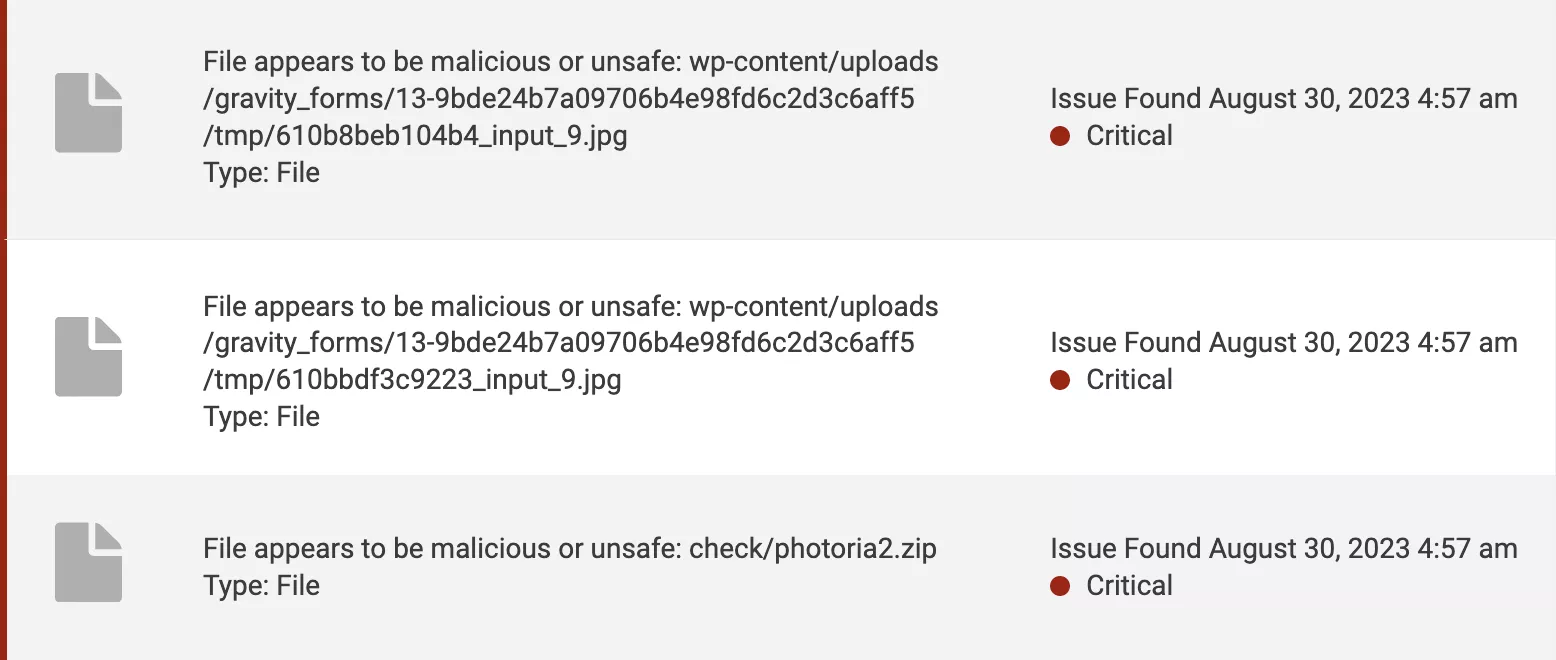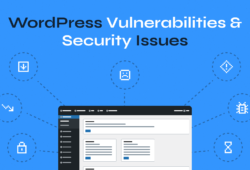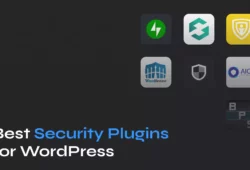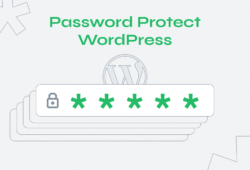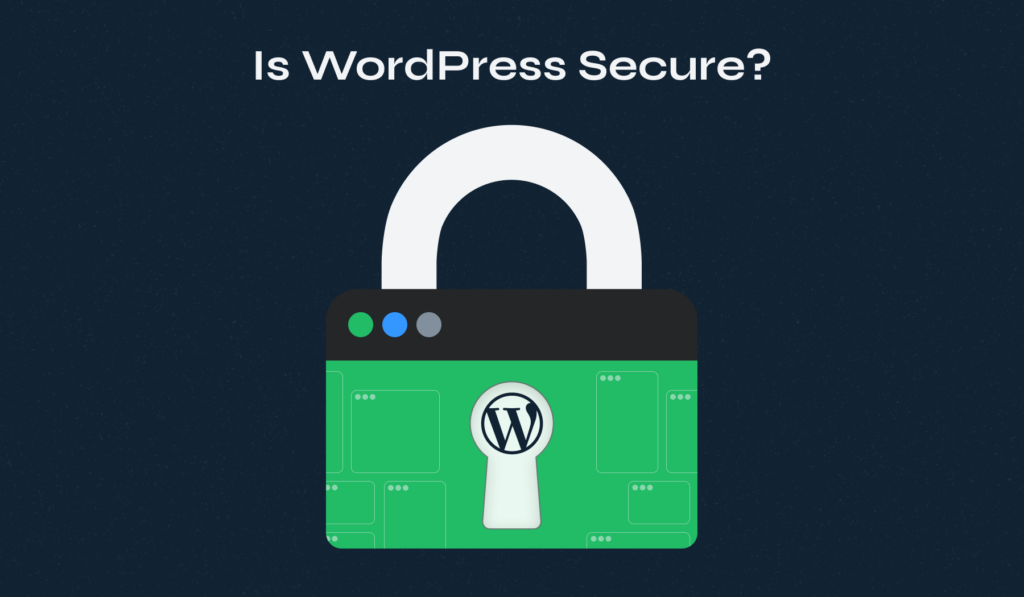
If you’re about to create a website using WordPress, you might be asking yourself, “Is WordPress secure?” This is a crucial question, whether you’re building a site for business, blogging, or fun. WordPress is a popular platform, but with popularity comes risk.
This guide will walk you through the most common WordPress security issues and how to protect your site. We’ll cover everything from keeping your software updated to choosing secure plugins and themes. By the end of this article, you’ll know how to keep your WordPress site safe and secure.
Quick Summary
Is WordPress secure? The short answer is Yes. By default, WordPress is a highly-secure CMS. However, vulnerabilities often arise from external factors like outdated themes and plugins or poor security practices.
The biggest security risk is the human factor—how we manage and secure our WordPress websites. By following best practices, such as keeping everything updated and using trusted themes and plugins, you can significantly reduce security risks.
Table of Contents
- How Secure is WordPress?
- Is WordPress Secure Enough?
- WordPress vs. Other CMS Platforms in Terms of Security
- Case Studies: WordPress Sites Facing Security Vreaches
- How to Secure WordPress?
How Secure is WordPress?
To understand this, we need to look at some common security issues. These problems are not part of WordPress itself but can affect your site under certain conditions.
Let’s explore the most prevalent issues and see how serious they are.
- Compromised WordPress or Hosting Login Credentials. One major security issue is when someone gets hold of your login credentials. This can give a malicious third party complete control over your site, allowing them to change content, install harmful software, or even take your site offline.
- Outdated Core, Plugins and Themes. Keeping your WordPress core, plugins, and themes updated is crucial. Outdated software can have security vulnerabilities that attackers can exploit to gain access, steal data, or inject malicious code. Regular updates not only improve security but also enhance performance.
- Poor Hosting Environment and Outdated Technology. Your hosting environment plays a big role in your site’s security. Poorly managed hosting services with outdated technology, like old PHP versions, can make your site vulnerable. Choosing a reputable WordPress hosting provider with strong security measures is essential.
- Malware, Spam, and Phishing. Malware is malicious software that can infiltrate your site, while spam refers to unwanted content that can harm user experience. Phishing involves tricking users into revealing personal information. All these threats are serious security concerns for WordPress sites.
- Brute Force Attacks. Brute force login attempts involve automated attempts to guess your login credentials. These attacks can overwhelm your site and compromise security. Implementing measures like limiting login attempts and using strong passwords can help mitigate this risk.
- SQL Injections occur when attackers exploit vulnerabilities in your site’s database queries. This can allow them to access, modify, or delete data. Using secure coding practices and keeping plugins and themes updated can help prevent SQL injections.
- Cross-Site Scripting (XSS) happen when attackers inject malicious scripts into your website, which can then affect your visitors. These scripts can steal information or perform other harmful actions. Validating and sanitizing user input can help protect against XSS attacks.
- Directory Traversal attacks allow attackers to access files and directories outside the web root folder. This can expose sensitive information and lead to further exploitation. Properly configuring your server and restricting access to critical files can prevent these attacks.
- File Inclusion Exploits occur when an attacker is able to include unauthorized files on the server. This can lead to the execution of malicious code and compromise the site. Ensuring proper validation and sanitization of input data can help mitigate this risk.
Is WordPress Secure Enough?
Now that we’ve looked at some common security issues let’s examine the big question: Is WordPress safe to use?
To answer this, we need to examine different aspects of WordPress, including its core, plugins, and themes. Each of these components plays a role in the overall security of your website. By understanding how they work and what potential risks they carry, you can take steps to keep your WordPress site secure. Let’s explore each of these elements in detail.
WordPress Core Security
The WordPress core is the foundation of the WordPress content management system (CMS). It includes all the essential files and functionalities needed to create and manage a website. The good news is that the WordPress core software is generally very secure.
The core is developed and maintained by a dedicated WordPress core team of security experts worldwide. It is regularly updated to fix bugs, patch vulnerabilities, and introduce new features. The WordPress security team, which includes about 50 experts, focuses solely on identifying and resolving issues.
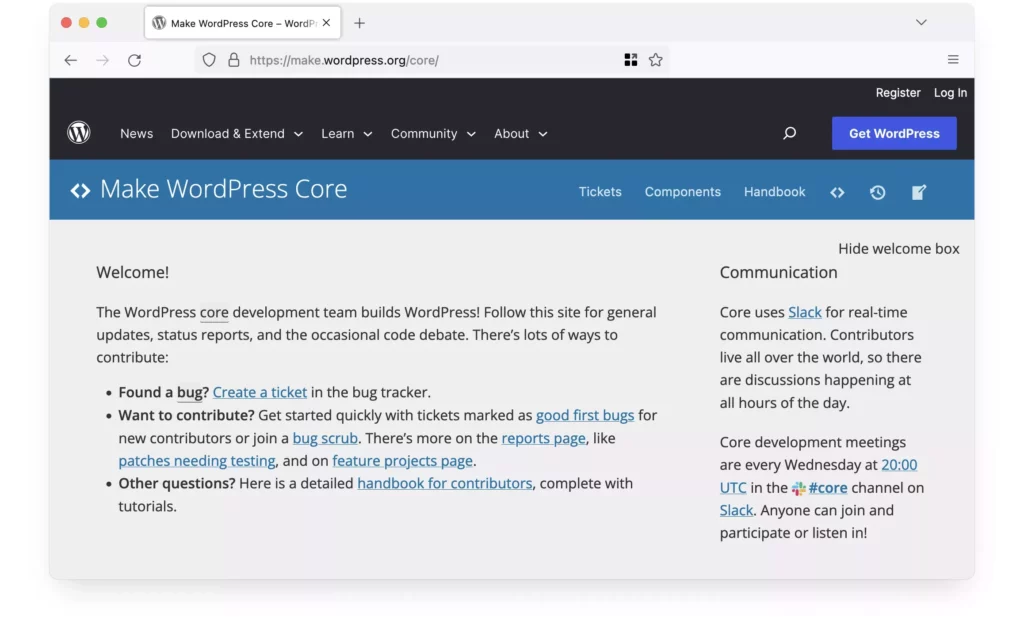
One of the key advantages of WordPress being open-source is that many developers constantly review and improve the code. This means vulnerabilities are quickly identified and fixed. Additionally, WordPress often releases security updates automatically, ensuring that most sites receive these critical patches without user intervention.
As long as you keep your WordPress core updated, you are taking a big step toward maintaining a secure website. However, staying secure requires more than just updates. Following best practices, such as using strong passwords and reliable hosting, also plays a crucial role in keeping your WordPress core secure. With these measures, the core itself remains a strong and secure foundation for your site.
WordPress Plugins Security
Plugins are a key part of what makes WordPress so versatile. They add new features and functionalities to your website without needing to modify the core code. However, they also introduce potential security risks.
Plugins are developed by third-party WordPress developers. While they go through a basic review process before being added to the WordPress plugin repository, not all plugins are created equal. Some may contain vulnerabilities that attackers can exploit. In fact, plugins are often the most common entry point for hackers.
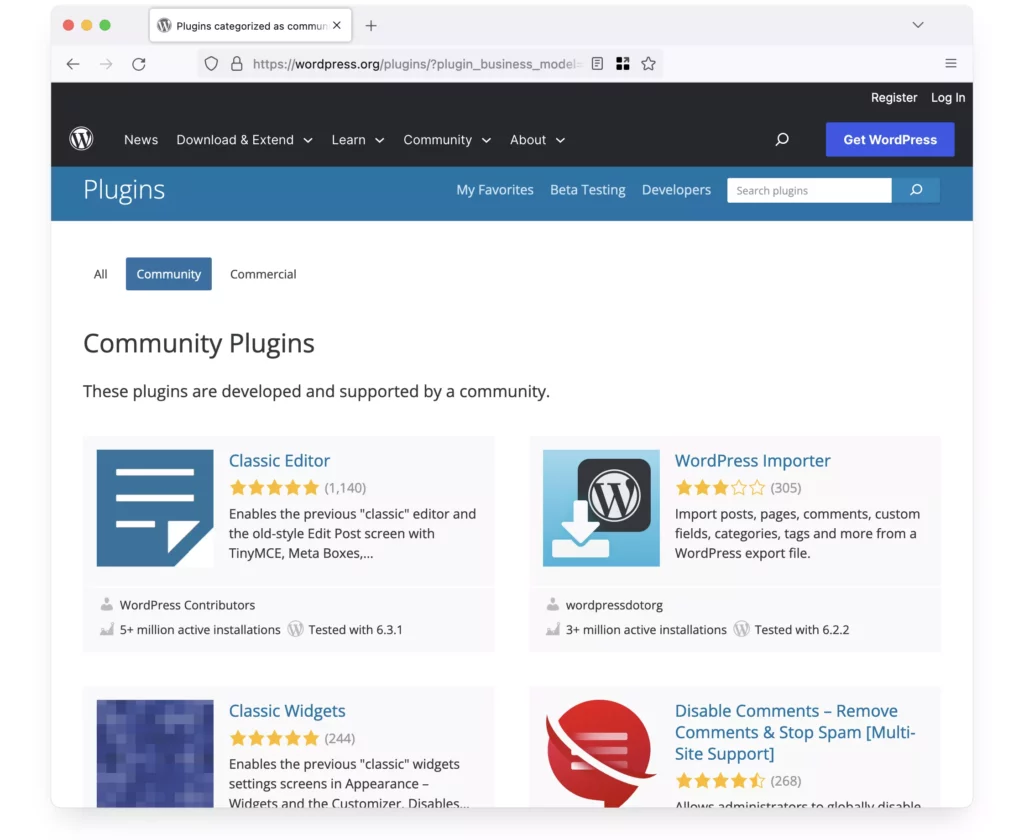
To ensure your site remains secure while using plugins, consider the following tips:
- Use Trusted Sources: Only install plugins from the official WordPress plugin directory or reputable developers. Avoid downloading plugins from unverified sources.
- Check Reviews and Ratings: Before installing a plugin, check its reviews and ratings. Popular plugins with positive feedback are generally safer.
- Update Regularly: Ensure your plugins are always updated to the latest versions. Developers frequently release updates to patch security vulnerabilities and improve performance.
- Limit Plugins: Only use the plugins you absolutely need. Too many plugins increase the risk of issues and can also slow down your site.
- Monitor Plugin Activity: Use security plugins that monitor the activity of other plugins on your site. These can alert you to any suspicious behavior.
- Deactivate and Delete Unused Plugins: If you’re not using a plugin, deactivate it. If you don’t plan to use it again, delete it from your site entirely. Even inactive plugins can be exploited if they are outdated.
By following these practices, you can minimize the security risks associated with WordPress plugins and keep your site safe.
WordPress Themes Security
Themes are essential for the appearance and layout of your WordPress site. However, like plugins, they can also pose security risks if not chosen or managed carefully.
Themes, especially those from third-party sources, can have vulnerabilities that hackers exploit. It’s crucial to be selective about your themes and follow best practices to ensure your site’s security.

Quick Tips to Increase WordPress Themes Security
- Use Reputable Sources: Only download themes from the official WordPress theme repository or trusted developers. Avoid using pirated or unverified themes, as they may contain malicious code.
- Check Reviews and Ratings: Before installing a theme, read user reviews and check ratings. Themes with positive feedback and high ratings are generally safer.
- Keep Themes Updated: Regularly update your themes to the latest versions. Theme developers release updates to fix vulnerabilities and improve functionality.
- Choose Actively Maintained Themes: Select themes actively maintained and updated by their developers. An actively maintained theme is more likely to be secure and compatible with the latest WordPress version.
- Avoid Unnecessary Customization: Extensive customization of theme files can lead to vulnerabilities, especially if you’re unfamiliar with secure coding practices. Use child themes for customizations to keep the main theme files intact and updatable.
- Scan Themes for Vulnerabilities: Use plugins to scan your themes for known vulnerabilities or suspicious code. This can help you detect and address potential issues early.
- Remove Unused Themes: Delete any themes that you are not using. Unused themes can still pose security risks if they contain vulnerabilities.
Following these tips can significantly reduce the security risks associated with WordPress themes and ensure a safer website.
Choosing a theme from reputable sources like WPZOOM can also help. We have dedicated over 14 years to creating secure and user-friendly WordPress themes. Each of our products undergoes rigorous security checks to provide an added level of quality and protection for your site.
Is WordPress Safe for E-commerce?
When it comes to e-commerce, security is paramount. You need to ensure that your customers’ data is protected and that your transactions are secure. So, is WordPress a safe choice for an e-commerce website?
The answer is Yes but with some important caveats. A WordPress site is as secure as its weakest element. Here are some steps you can take to ensure your e-commerce site is secure:
- Choose Reputable E-commerce Plugins: Use well-known e-commerce plugins like WooCommerce, Dokan, or Easy Digital Downloads. These plugins are regularly updated and have a strong focus on security.
- Secure Payment Gateways: Use trusted payment gateways like PayPal, Stripe, or Authorize.Net. These gateways offer secure transaction processing and help protect customer payment information.
- SSL Certificates: Ensure your site has an SSL certificate to encrypt data transferred between your site and your customers. This is crucial for protecting sensitive information like credit card details.
Following these best practices, you can create secure e-commerce sites on WordPress. While WordPress can be a great platform for e-commerce, its security largely depends on the measures you take to protect your site.
WordPress vs. Other CMS Platforms in Terms of Security
When choosing a content management system (CMS) for your website, security is a critical factor. Let’s compare the security of WordPress with other popular CMS platforms like Joomla, Drupal, Squarespace, and Wix.
WordPress
Strengths:
- Large Community and Regular Updates: WordPress benefits from a large community of developers and security experts who regularly update the core software to address vulnerabilities.
- Extensive Plugin Ecosystem: While plugins can be a security risk, the extensive plugin ecosystem also includes many robust security plugins that help protect your site.
- Flexibility: WordPress’s open-source nature allows for significant customization and implementation of advanced security features.
Weaknesses:
- Third-Party Plugins and Themes: Many issues arise from poorly coded or outdated third-party plugins and themes.
- Human Error: Security largely depends on the site owner’s diligence in maintaining updates and implementing best practices.
Joomla
Strengths:
- Advanced User Management: Joomla has a built-in access control list (ACL), offering more advanced user management and security options.
- Security Extensions: Like WordPress, Joomla has several extensions that enhance site protection.
Weaknesses:
- Complexity: Joomla can be more complex than WordPress, making it harder for beginners to manage security effectively.
- Fewer Updates: Joomla has fewer updates and a smaller community, which can slow down vulnerability response.
Drupal
Strengths:
- Strong Security Focus: Drupal is known for its strong security framework, with a dedicated security team that rigorously tests the core and contributed modules.
- Granular User Permissions: Drupal offers detailed user permissions, enhancing security for complex websites.
Weaknesses:
- Complexity: Drupal is more complex and requires more technical expertise, which can be a barrier for smaller businesses or individual users.
- Fewer Themes and Plugins: There are fewer third-party modules and themes compared to WordPress, though this can also be a strength as it reduces the potential for poorly coded add-ons.
Squarespace
Strengths:
- Managed Security: Squarespace handles all security updates and server maintenance, ideal for users who do not want to manage technical aspects.
- SSL Certificates Included: SSL certificates are included and automatically configured for all sites.
Weaknesses:
- Less Flexibility: Squarespace’s closed platform offers less flexibility in customization and adding advanced security features.
- Limited Control: Users have limited control over security settings and cannot implement custom security measures.
Wix
Strengths:
- Managed Security: Wix also handles security updates and server maintenance, reducing the burden on the user.
- SSL Certificates Included: SSL certificates are automatically included and configured for all sites.
Weaknesses:
- Limited Customization: Wix’s closed platform limits the ability to customize security settings or add advanced security features.
- Less Transparency: Users have less insight into the security features being implemented compared to open-source platforms like WordPress.
WordPress offers a robust and flexible security framework, but it requires active management and diligence from users to maintain security, especially regarding third-party plugins and themes.
Joomla and Drupal both offer strong security features, with Drupal being particularly known for its rigorous security measures, though both can be more complex to manage.
Squarespace and Wix provide managed security, making them easier for beginners but less flexible for those who need advanced security features and customization.
Ultimately, the best CMS for your needs will depend on your level of technical expertise, your willingness to manage security updates, and the specific requirements of your website.
Case Studies: WordPress Sites Facing Security Vreaches
Examining real-world case studies of WordPress sites that have encountered issues can provide valuable insights into common vulnerabilities and effective mitigation strategies. Here are a few notable examples:
Case Study 1: The Panama Papers Leak
Overview: In 2016, the Panama Papers leak exposed 11.5 million documents detailing the financial information of offshore entities. The breach occurred at Mossack Fonseca, a law firm that used WordPress for its website.
Security Issue: The breach was due to outdated WordPress plugins. Specifically, a vulnerability in the Revolution Slider plugin, which was not updated, allowed attackers to gain access.
Lessons Learned:
- Importance of Updates: Always keep plugins, themes, and the WordPress core updated to the latest versions.
- Regular Security Audits: Conduct regular security audits to identify and address vulnerabilities.
- Using Trusted Plugins: Only use plugins from reputable sources and ensure they are regularly maintained.
Case Study 2: WordPress REST API Vulnerability
Overview: In 2017, a vulnerability in the WordPress REST API allowed unauthorized users to modify content on affected websites.
Security Issue: The vulnerability was in the core WordPress software, and it was quickly patched in a subsequent update.
Lessons Learned:
- Prompt Updates: Apply updates as soon as they are released to protect against known vulnerabilities.
- Backup Strategies: Maintain regular backups to quickly restore your site if it is compromised.
- Security Plugins: Use them to add an extra layer of protection and monitor for suspicious activities.
These case studies highlight the importance of regular updates, strong site security practices, and vigilant monitoring. While WordPress is a powerful and flexible platform, its security depends significantly on how well users manage and protect their sites. By learning from these real-world examples, you can better understand the potential risks and take proactive steps to secure your WordPress website.
How to Secure WordPress?
Securing your WordPress site is essential to protect it from various threats. Here are some important steps to enhance the security of your WordPress website:
- Use WordPress Security Plugins. These plugins can help protect your site by handling many security measures automatically. Popular options include Wordfence, Sucuri, and iThemes Security. These plugins can scan for malware, enforce strong passwords, and monitor your site for suspicious activity.
- Keep WordPress Core, Themes, and Plugins Updated: Regularly check for updates and install them promptly. Updates often include security patches that protect your site from known vulnerabilities. Enable automatic updates if possible to ensure you always have the latest security fixes.
- Use Reputable Themes and Plugins: Only download themes and plugins from trusted sources. Avoid using pirated or unverified resources, as they may contain security vulnerabilities. Stick to themes and plugins from the official WordPress repository or well-known developers.
- Remove Unnecessary Themes and Plugins: Delete any themes and plugins you are not using. Even inactive themes and plugins can be exploited if they have vulnerabilities. Keeping your site lean with only the necessary components reduces the risk of issues.
- Use Secure Hosting: Choose a reputable hosting provider with robust security tools, such as firewalls, malware scanning, regular backups, and server hardening. Good hosting providers will also support the latest PHP versions and other important technologies.
- Use Unique and Strong Passwords: Ensure all your passwords, including those for WordPress admin, database, and hosting accounts, are complex and unique. Use a password manager like Bitwarden to generate and store strong passwords securely.
- Implement Two-Factor Authentication (2FA): Enable 2FA to add an extra layer of security to your WordPress login process. This requires users to provide a second piece of information, such as a code from a mobile app, in addition to their password.
- Regular Security Scans: Use security plugins to regularly scan your website for malware, vulnerabilities, and suspicious activity. Enable a Web Application Firewall (WAF) for additional protection against attacks.
- Limit Login Attempts: Use a WordPress security plugin to limit the number of login attempts allowed. This prevents brute-force attacks that try multiple password combinations to gain access to your site.
- Use SSL Certificates: Install an SSL certificate to encrypt data transmitted between your server and visitors’ browsers. This is crucial for protecting sensitive information and improving SEO.
- Protect wp-config.php and .htaccess Files: Restrict access to sensitive files like wp-config.php and .htaccess by placing them outside the web root directory or using server configuration rules. This adds an extra layer of protection for your site.
- Disable File Editing: Prevent unauthorized access by disabling file editing through the WordPress dashboard. This stops potential attackers from modifying theme and plugin files if they gain access to your admin panel.
- Secure User Roles and Permissions: Assign appropriate roles to users and avoid giving unnecessary administrative access. This reduces the attack surface by limiting what each user can do.
- Regular Backups: Create regular backups of your website and its database. This ensures you can restore your site quickly if it is compromised. Use a reliable backup plugin or service for automated backups.
- Regularly Monitor and Audit: Keep an eye on your website’s security status, monitor for unusual activities, and conduct regular security audits. Plugins can handle most of these tasks and provide easy-to-read dashboards with all the necessary information.
By following these steps, you can significantly enhance the security of your WordPress site and protect it from various threats. Regular maintenance and vigilance are key to keeping your site secure.
Bottom Line
So, is WordPress reliable? The answer is yes — WordPress is secure if you follow best practices and stay vigilant. While the platform itself is robust and regularly updated, security largely depends on how you manage your site.
Compared to other CMS platforms like Joomla, Drupal, Squarespace, and Wix, WordPress offers a good balance of flexibility and security. However, it requires active management to maintain its security.
Whether you’re running a personal blog, a business site, or an e-commerce platform, WordPress can be a secure and reliable choice with the right approach.
